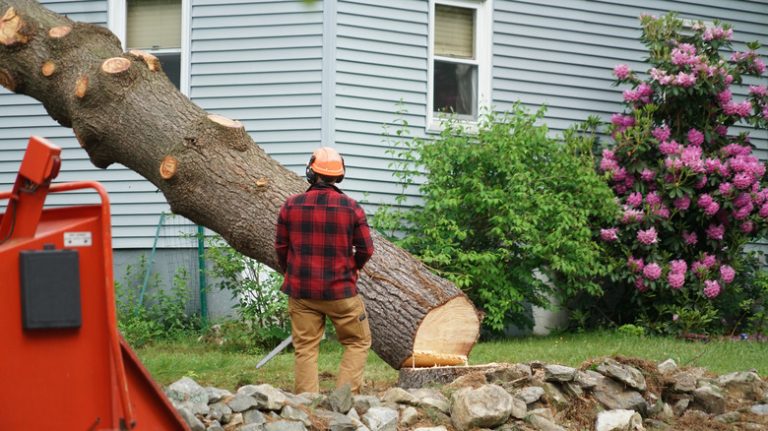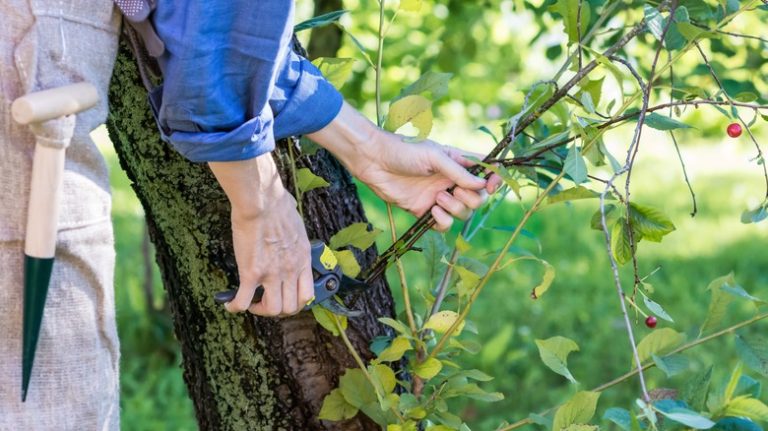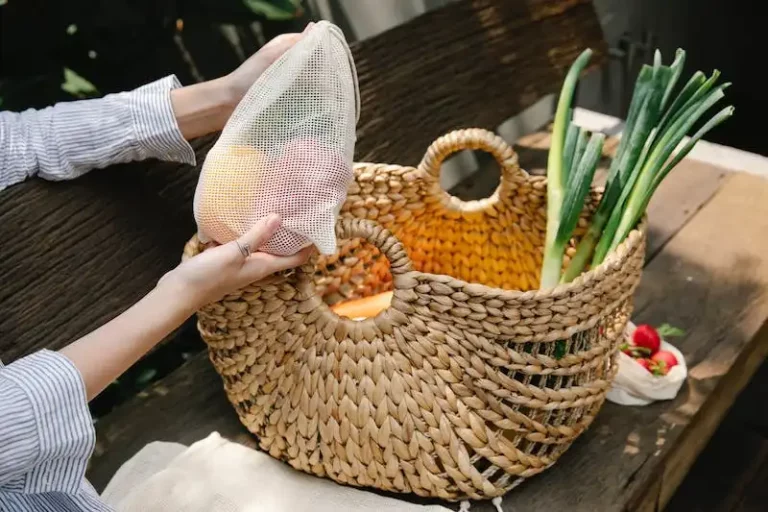The forsythia hedge is a popular choice for many gardeners due to its easy care, vibrant yellow blossoms, and fast growth habit. This deciduous shrub can grow up to 10 feet in height and has an arching habit, making it an excellent choice for creating a focal point in your garden or as a border plant.
Forsythias can be planted as cuttings using the stems from an existing plant, or you can purchase young plants from a nursery. They can tolerate a wide range of soil types, although they prefer well-draining soil and full sun to produce the most blooms. Avoid planting in areas with heavy shade, as this can result in fewer flowers.
Once planted, forsythias require minimal maintenance. Watering is only necessary during dry spells, and they do not require regular fertilization. However, a balanced fertilizer can be applied in the spring to encourage healthy growth and vibrant blooms. Pruning can be done after flowering to maintain the desired shape and height of the hedge.
Forsythias are relatively pest-free, although they may occasionally attract aphids or other common garden pests. Regular inspection and treatment with a suitable pesticide or hormone spray can help prevent infestations.
In colder regions, winter protection may be necessary to protect the stems from frost damage. This can be done by applying a layer of mulch around the base of the shrub or covering it with a burlap sack or similar material.
Overall, forsythia hedges are an excellent addition to any garden, providing a burst of color in early spring when most plants are still dormant. Their easy care and fast growth make them a popular choice for both novice and experienced gardeners, and their vibrant yellow blossoms can brighten any outdoor space.
Lynwood Gold Forsythia
Lynwood Gold Forsythia is a fast growing shrub that can be an attractive addition to any garden or landscape. With its bright yellow blossoms, this forsythia cultivar can easily become the focal point of your outdoor space.
To maintain a healthy and vibrant Lynwood Gold Forsythia hedge, there are a few key points to keep in mind. First, it prefers full sun to light shade, so make sure to plant it in a location that receives at least 6 hours of direct sunlight daily.
When planting Lynwood Gold Forsythia, make sure to dig a hole that is as deep as the root ball and twice as wide. After planting, water it thoroughly and continue to water it regularly, especially during dry spells.
Although Lynwood Gold Forsythia is a relatively low-maintenance plant, it still requires some care. Pruning is an important aspect of the maintenance routine for this shrub. Prune it soon after flowering to remove any dead or damaged wood and to shape the plant. This will encourage new growth and maintain a tidy appearance.
Fertilizing your Lynwood Gold Forsythia hedge is also important to promote healthy growth and abundant blossoms. Use a balanced fertilizer, such as a 10-10-10 or 14-14-14 formula, in early spring before new growth appears. Follow the instructions on the fertilizer packaging for the appropriate application rate.
If your Lynwood Gold Forsythia hedge is not growing well or showing signs of nutrient deficiency, you can use a slow-release fertilizer. This type of fertilizer provides nutrients over an extended period of time, reducing the need for frequent applications.
In terms of pests and diseases, Lynwood Gold Forsythia is generally a hardy plant. However, it can be susceptible to aphids and leaf spot. To handle these problems, you can use insecticidal soap for aphids and a fungicide for leaf spot.
One method of propagating Lynwood Gold Forsythia is through stem cuttings. Take 4 to 6-inch stem cuttings from a healthy and mature plant in the summer or early fall. Remove the lower leaves, dip the cut end in rooting hormone, and plant it in a pot filled with a well-draining soil mix. Place a plastic bag over the pot to create a mini greenhouse and keep the cutting in a warm and humid location. Water the cutting regularly, and soon enough, it will develop roots and be ready for transplanting.
| Planting | Care | Pruning |
|---|---|---|
| Plant in full sun to light shade | Water regularly and fertilize in spring | Prune after flowering to maintain shape |
| Prefer well-draining soil | Handle pests and diseases as necessary | Remove dead or damaged wood |
| Begin watering as soon as planting | Propagate through stem cuttings | Encourage new growth and uniform height |
With its easy care and colorful blooms, Lynwood Gold Forsythia is a popular choice for those looking to add a touch of golden beauty to their gardens or as hedges. Plant one today and enjoy the vibrant and fast growth of this versatile shrub.
Forsythia Hedge
Forsythia hedge is a popular choice for many gardeners looking to add a burst of color to their outdoor space. With its bright, golden yellow blossoms, forsythias can quickly become a focal point in any landscape.
Here are some tips for planting and caring for forsythia hedges:
Light: Forsythias grow best in full sun, although they can tolerate some shade. Plant your forsythia hedge in a location where it will receive at least 6 hours of direct sunlight each day.
Soil: Forsythias prefer well-draining soil that is rich in organic matter. If your soil is heavy clay, you may need to amend it with compost or peat moss to improve drainage.
Watering: Water your forsythia hedge regularly, especially during dry spells. Keep the soil moist, but not waterlogged. A layer of mulch around the base of the plants can help retain moisture and prevent weeds from growing.
Temperature: Forsythias are hardy shrubs that can withstand cold temperatures. They are able to survive winter conditions without any problems.
Habit: Forsythias have a fast-growing habit and can quickly reach a height of 6 to 12 feet. If you want to maintain a lower height, regular pruning is necessary.
Pruning: Prune your forsythia hedge soon after it finishes blooming in the spring. This will encourage new growth and help maintain a compact shape. Cut back any dead or damaged wood, as well as any branches that are growing out of control.
Fertilizer: Forsythias are not heavy feeders, but they can benefit from an application of balanced fertilizer in early spring. Follow the instructions on the fertilizer package for proper dosage.
Propagation: Forsythias can be propagated by taking stem cuttings in early summer. Dip the cut end in rooting hormone and plant it in a well-draining soil mixture. Keep the soil moist and provide bright, indirect light.
Problems: Forsythias are generally disease and pest resistant, but they can sometimes be affected by aphids or powdery mildew. If you notice any signs of these issues, treat them promptly with the appropriate pesticide or fungicide.
In summary, forsythia hedges are easy to grow and maintain, adding a splash of golden color to your garden. With the right care and attention, these shrubs can quickly become a beautiful and vibrant addition to any landscape.
Planting Forsythia Hedges Tips On Using Forsythia As A Hedge
Forsythia is a colorful shrub that can be planted to create a beautiful and vibrant hedge. Its golden blossoms in spring make for a visually stunning display. Planting forsythia hedges is easy and can provide a striking focal point in any landscape.
When planting forsythia, it is important to choose a location that receives full sunlight. Forsythia thrives in bright light and may not grow as well in shaded areas. The soil should be well-drained and fertile, as forsythias require a balanced nutrient supply. Before planting, it is beneficial to amend the soil with organic matter or a slow-release fertilizer to provide the necessary nutrients.
Forsythias can be planted in both fall and spring, although planting in spring allows the shrub to establish its roots before the onset of winter. Once planted, watering the forsythia regularly is crucial, especially during dry periods. The soil should be kept moist but not waterlogged to prevent root rot.
To maintain the desired height and shape of the hedge, regular pruning is required. Forsythia can be pruned after it has finished flowering in spring. It is important to remove any dead or damaged stems and to thin out any overcrowded areas. Pruning also helps to promote new growth and maintain the overall health and shape of the hedge.
Forsythias can be propagated through stem cuttings, which makes it easy to create new plants. Cuttings can be taken in late spring or early summer. Dip the cut end of the stem in a rooting hormone to encourage root development and plant it in a well-draining potting mix. Keep the cuttings in a warm and humid environment until they root, and then they can be transplanted into the garden.
It is important to fertilize forsythias regularly to ensure healthy growth. A balanced fertilizer with equal amounts of nitrogen, phosphorus, and potassium is recommended. Fertilize in early spring and again in late summer to provide the necessary nutrients for the shrub.
Forsythias are hardy plants that can handle a range of temperatures and soil conditions. They are known to be tolerant of winter temperatures and even thrive in colder climates. However, in extremely hot and dry conditions, providing extra watering and shade may be necessary to help the shrubs survive.
By following these planting and care tips, you can enjoy the beauty and vibrancy of forsythia hedges in your garden. Whether used as a hedge or as a stand-alone shrub, the golden blossoms and green foliage will provide a stunning addition to your landscape.
Using Forsythia as a Hedge
Using Forsythia as a hedge can be a great choice for your garden. Forsythias are known for their beautiful and vibrant yellow flowers that bloom in early spring. Although they can grow into a large shrub, they can also be easily pruned and maintained as a hedge.
Here are some tips for using Forsythia as a hedge:
| Planting | Choose a location with well-drained soil and full sunlight. Forsythias can tolerate a wide range of soil conditions, but they prefer a slightly acidic to neutral pH level. Dig a hole that is wide and deep enough to accommodate the roots of the plant. |
| Propagation | Forsythias can be propagated from cuttings. Take cuttings in late spring or early summer after the flowers have faded. Dip the cut end of the stem in a rooting hormone and plant it in a pot with a well-draining soil mix. Keep the soil moist and place the pot in a shaded area. The cuttings should root and start to grow within a few weeks. |
| Growth and Care | Forsythias are fast-growing shrubs that can quickly fill in a hedge. Water the plants regularly, especially during dry periods. Fertilize the hedges in early spring with a balanced fertilizer to promote healthy growth. Prune the shrubs after they have finished blooming to maintain their shape. Remove any dead or damaged wood and trim the height and width of the hedge as desired. |
| Problems and Maintenance | Forsythias are generally easy to care for and do not have many serious pest or disease problems. However, they may attract aphids, which can be controlled with insecticidal soap or a strong stream of water. Forsythias can also become leggy over time, so regular pruning is necessary to keep them dense and compact. |
Using Forsythia as a hedge can create a colorful and eye-catching focal point in your garden, especially during the winter months when other plants may be dormant. Their bright yellow flowers can bring a touch of gold to your landscape and brighten up any shady areas. So if you want a fast-growing, low-maintenance hedge, consider using Forsythia.
Start planting and enjoy the vibrant colors and fast growth of your Forsythia hedge!



